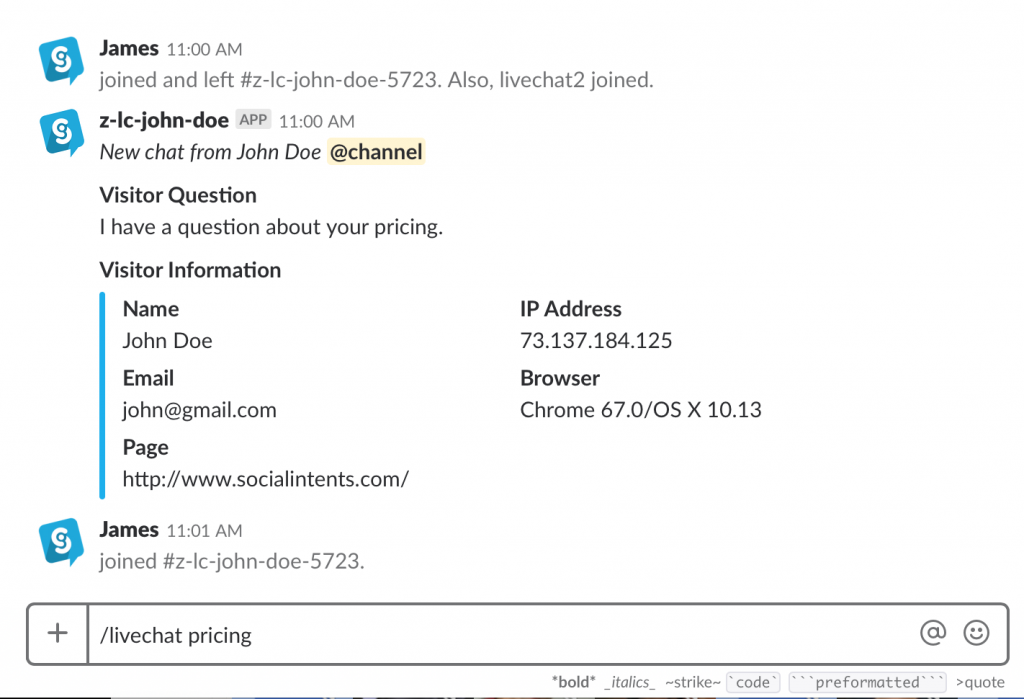Want to supercharge your sales and connect with customers instantly? Using live chat for sales might be the perfect solution.
Imagine this: a potential buyer lands on your website, curious and ready to explore your products. Instead of waiting for email replies or dealing with long phone hold times, they can get immediate answers through live chat. This real-time conversation lets you address their queries on the spot and smoothly guide them through the purchasing process.
Plus, the key insights gained from these live chat interactions can help you understand customer needs and preferences better, so you can tailor your products or services.
Below we have included everything you need to know about live chat sales. Whether you’re new to live chat or looking to optimize your current setup, we’ve got you covered.
What is Live Chat for Sales?
In a nutshell, it’s like any other live chat you see on websites, but with a twist. Instead of chatting with customer support, visitors get to interact directly with a salesperson.
Here’s how it works: Website visitors use the chat widget to start a real-time conversation with your brand. But instead of just getting help with generic queries, they connect with sales reps who can answer specific questions about products, availability, and more.
It’s like having a knowledgeable store clerk available to assist them online, just as they would in a physical store.
The goal of a sales chat is to provide the same level of help and guidance you’d expect in a brick-and-mortar shop. It’s all about giving potential customers the info they need to make a purchase decision right then and there.
FUN FACT: Many businesses run both types of live chat simultaneously. They use one for customer support to help existing customers with issues or questions, and another for sales to assist new customers with their shopping experience.
Often, the chat includes conversation routing options, allowing website visitors to choose who they want to talk to. This helps ensure they are connected to the right person for their needs, whether it’s customer support or a salesperson.
Can Live Chat Software Actually Boost Online Sales?
Several live chat reports show that utilizing live chat results in a 48% surge in revenue per chat hour.
So to put it simply: yes, live chat software does increase sales.
Here’s how:
Live chat has become a communications standard
Did you know that 79% of customers prefer live chat over other methods of sales communication?
Why? Because they get immediate responses.
These days, customers expect instant communication. We’re no longer satisfied with just filling out forms or waiting for email replies.
This immediacy not only improves customer satisfaction but also increases the likelihood of making a sale, as customers are more likely to complete a purchase when their questions are quickly answered.
Live chat speeds up the sales cycle
Live chat is proactive. It allows you to offer real-time assistance, answer questions on the spot, and guide customers straight to a purchase. No waiting, no fuss.
Sales live chat builds personal connections
Sure, landing pages and sales pages are great for high conversion rates, but let’s face it – they can be a bit impersonal.
Engaging copy is awesome, but it’s never going to replace the feel of a real conversation. Live chat gives you that personal touch. You’re there when customers need you, ready to answer their questions, recommend products, and learn more about their needs.
This way, you’re not just making sales, you’re building relationships.
Live chat qualifies leads
When a visitor starts a chat with your sales team, they’re essentially qualifying themselves as a lead. Each chat is an opportunity to engage with someone interested in your product, allowing you to tailor the conversation to their needs and move them closer to making a purchase.
Must-Have Features in Your Live Chat for Sales
If you’re looking to make the most out of your live chat sales, there are a few key elements you need to include.
Customer expectations are high, and meeting them can make all the difference in converting website visitors into loyal customers. Let’s break down what your live chat should offer to keep your potential buyers happy and coming back for more:
Proactive chat
Sometimes customers are shy or don’t notice the chat widget. The best live chat tools can initiate proactive chats and engage potential customers who might need help or are visiting your site for the first time. This can turn passive visitors into active leads.
AI and automation
Integrating AI into your live chat can be a game-changer. AI chatbots can handle simple queries, route customers to the right departments, and even gather initial information before passing the conversation to a human rep. This not only speeds up response times but also ensures that your sales team can focus on more complex queries and high-quality leads.
Chat history and analytics
Keeping a history of past chats can be incredibly valuable. It allows your sales team to understand previous interactions, ensuring continuity and a personalized experience. Plus, live chat reports can provide insights into common questions and concerns, helping you refine your sales approach and improve customer engagement.
Integrations with CRM and other tools
Seamless integration with your CRM and other sales and analytics tools is an essential live chat feature. This allows your sales and customer service teams to access customer data quickly, analyze visitor behavior, and even track where customers are in the sales funnel.
For example, integrating your live chat with Google Analytics can provide valuable insights into which pages are driving the most chat interactions.
NOTE: The best live chat apps should seamlessly integrate with the software you’re already using. This way, you save time and money by not having to train your team on new systems.
Customization
Your live chat should reflect your brand’s personality. Customizing the chat with your brand’s colors, logo, and tone of voice can create a cohesive experience for customers. This live chat functionality helps in building brand recognition and trust.
Affordability
Whether you’re a small business looking to boost sales on a budget or a big company needing to scale up, the cost of the live chat app matters. Look for plans that offer flexibility, like unlimited agents or scalable options that grow with your business.
Ease of setup and use
Tech should make our lives easier, not more complicated. Your live chat software should be easy to set up and intuitive to use – for both your sales agents and your customers. You want something that you can get up and running in just a few clicks.
Security and privacy
This is crucial, especially for sales live chat where customers might share sensitive information like financial details. Make sure your live chat solution has robust security and privacy features to protect your customers’ data.
File and document sharing
Your live chat should support sharing documents, images, and clickable buttons. This is essential for sales as your team might need to share catalogs or product links, and customers might need to send images or attachments.
Real-time visitor tracking
You can use this data to send proactive messages, engage visitors, upsell products, and even reduce cart abandonment.
Chat transcripts and history
No one likes repeating themselves. Chat transcripts and history ensure that your team can pick up right where the last conversation left off, providing personalized assistance without making customers re-explain their issues.
24/7 support with chatbots
Your business might operate in multiple time zones, and having 24/7 support is often impractical. Chatbots for sales can provide instant, round-the-clock support, handling basic queries and freeing up your sales agents for more complex issues.
Canned responses
Speed is key in live chat. Customers expect quick replies, sometimes within seconds. Canned messages help you meet these expectations by providing pre-written answers to common questions, making interactions faster and more efficient.
Optimized for mobile apps
Ensure your live chat widget is responsive and works well on mobile devices for a smooth user experience for customers accessing your site from their phones.
9 Tips to Help You Drive Sales With Live Chat
Now that you know what a good live chat tool looks like, let’s take a look at 9 strategies that will help you make the most of your live chat conversations.
1. Integrate sales live chat with your internal communications tool
Communication is the backbone of any business. Your teams are constantly collaborating and chatting throughout the day, and most of these conversations happen in one central place – your internal communications tools like Slack or MS Teams.
But often, live chat operates outside of these main customer communication channels.
Your team members engage with colleagues on Slack or MS Teams but have to switch to another platform to talk to customers. So, what happens when they need input from a colleague or need to involve another person in a chat conversation?
They have to switch between apps, copy and paste fragments of conversations, and potentially lose the flow of the engagement. This can result in lost momentum, reduced productivity, and even missed sales opportunities.
Luckily, the solution is quite simple. Integrate sales chat with Slack or MS Teams, and answer those chat conversations in those apps directly.
Social Intents is a live chat tool that seamlessly integrates with popular internal communications platforms like Slack, Microsoft Teams, Zoom, and Webex. This integration allows your team to manage live chat conversations directly from the tools they already use.
Plus, it’s super easy to set up and doesn’t require extensive agent training to use.
Learn more about Social Intents’ features here.
2. Have your sales professionals answer sales chats
This might sound obvious, but it’s a crucial point to consider. A common mistake many companies make is letting their customer support team handle sales chats.
Since these companies already use live chats for customer support, it seems logical to have the same agents chat with potential leads. However, this approach often falls short.
Customer service agents are trained to assist and solve problems, not to sell. Their main goal is to answer questions and provide help, but they don’t necessarily have the sales skills to close deals. They might lack the know-how and the instinct to turn a casual chat into a successful sale.
Even if there’s just one sales rep on the team, make sure they’re the ones handling sales chats. This simple change can boost the chat’s effectiveness instantly. Salespeople know how to engage leads, understand their needs, and guide them toward making a purchase. Let them do what they do best.
3. Set online and offline hours
How often have you started a live chat only to find yourself endlessly waiting for a response? And how many times have you abandoned a website because no one responded to your chat request?
Frustrating, isn’t it?
Understandably, your team can’t be available 24/7. Most companies don’t operate around the clock and don’t have the staff to manage chats at all hours.
But not informing visitors about your availability is a big no-no. It leaves them dissatisfied and gives a poor impression of your business.
To avoid this, set clear business hours for your sales chat. When your team is offline, make sure to display a message letting customers know, and offer them the option to leave a message. This way, visitors aren’t left hanging and can still get in touch when you’re back online.
4. Engage visitors proactively
Some visitors will immediately turn to the chat option when they encounter a problem. But many others will try to solve their issues on their own first.
They might browse your website for more information and answers. They might still need help, but for some reason, they decide not to contact your sales team right away.
That’s where proactive engagement comes in.
Proactive chat messages are a way to nudge visitors to start a conversation. These triggers let visitors know that your sales team is ready to help if they need assistance. Typically, they are triggered automatically by your live chat system based on specific visitor behaviors – like visiting certain pages, returning to a product or service page multiple times, or staying on a page for a specific amount of time.
Here are a few ways to use proactive chat triggers effectively:
- First-time visitors: Send personalized messages to new visitors offering help and letting them know that someone is available to assist them. For example, a message might pop up saying, “Hi there! Welcome to our site. If you have any questions or need assistance, we’re here to help!”
- Returning visitors: Engage repeat visitors with messages welcoming them back and offering assistance. Something like, “Welcome back! Can we help you find what you’re looking for today?” can make them feel valued and supported.
- Page-specific engagement: Target visitors who spend a lot of time on particular pages, like product or pricing pages, with messages asking if they need any help or have questions. For instance, if someone is lingering on a product page, you might send a message like, “Need more details about this product? We’re here to help!”
- Abandoned carts: If a visitor adds items to their cart but doesn’t proceed to checkout, a proactive message can remind them of their pending purchase. A gentle nudge like, “Hey, it looks like you have items in your cart. Do you need any assistance before checking out?” can reduce cart abandonment rates.
- Exit intent: If a visitor shows signs of leaving the site, like moving their cursor towards the close button, a proactive message can encourage them to stay and chat. A prompt such as, “Wait! Can we help you with something before you go?” might make them reconsider.
- Scroll depth: Trigger messages based on how far a visitor scrolls on a page. If they scroll past a certain point, it indicates interest. A message like, “It looks like you’re interested in our services. Do you have any questions we can answer?” can be effective.
The right live chat software should give you the option to set up proactive chat seamlessly.
5. Personalize the sales chat widget
Traditionally, a big part of sales success has always revolved around the salesperson’s ability to connect with a customer on a personal level. That personal connection would result in trust. And that, in turn, led directly to a sale.
But such a customer experience feels almost impossible to achieve with live chat, right?
Take a look at this generic, impersonal widget:
How often, seeing a live chat widget, do you wonder whether there is even an actual human on the other end? Or maybe it’s just a chatbot that’s conversing with you?
Well, good news.
There are ways to overcome this problem, and building personal connections isn’t restricted to face-to-face sales interactions only.
The best place to start is by personalizing the sales widget and clarifying who the person is chatting with.
For example, instead of using generic headings like “[Company] Sales Team,” display the sales agent’s name, position in the company, and photo. This simple tweak can make a huge difference. When customers see they’re talking to a real person, it instantly builds trust and makes the conversation feel more personal.
This is a great example of a personalized widget that you can achieve with Social Intents’ live chat tool:
Here are a few more tips to personalize your sales widget:
- Agent bios: Include a brief bio of the sales agent. Mentioning their expertise or how long they’ve been with the company can make the interaction feel more genuine.
- Personal greetings: Use the visitor’s name if you have it. A greeting like, “Hi [Name], how can I assist you today?” feels much more personal and engaging.
- Custom avatars: If using actual photos isn’t possible, consider custom avatars that reflect the sales agent’s appearance or personality. This still adds a personal touch without compromising privacy.
- Dynamic responses: Tailor responses based on visitor behavior or history. If it’s a returning visitor, acknowledge their previous interactions or purchases.
Personalizing your chat pop-ups is a small change that can have a big impact. It helps bridge the gap between the digital and personal touch, making customers feel more comfortable and valued.
6. Qualify prospects with pre-chat forms
Any salesperson will tell you that one of the toughest parts of selling is quickly figuring out which leads are worth your time. Not everyone who emails, calls, or engages with your company is an ideal prospect.
Sales live chat is no different. Not everyone who starts a live chat session will need your product or service, have an immediate need for a solution, or have the budget to pay for it. The quicker you find out whether the person is a good fit, the better you’ll serve them – even if it means pointing them elsewhere.
Thankfully, you can pre-qualify prospects with live chat too.
How? By including a short pre-chat form with a few basic qualifying questions.
These questions should align with what your sales reps typically ask when they first engage with potential clients through other channels. However, keep it short and sweet – seeing more than three questions might scare away some prospects.
Here are some example questions you could include in your pre-chat form:
- Name and contact information: Basic information to personalize the conversation.
- Purpose of inquiry: A dropdown or short answer to understand what they’re looking for.
- Budget range: A simple question to gauge whether they can afford your services.
- Immediate needs or timeline: Helps to identify how urgent their requirement is.
By using pre-chat forms, you can filter out unqualified leads right from the start. This means your sales team spends their time and energy on prospects who are more likely to convert, making the entire process more efficient and productive.
Remember, the goal is to make the sales process as smooth and user-friendly as possible while gathering essential information to qualify the lead effectively.
7. Manage chat volume on popular pages
High-traffic pages often generate a lot of “noise” for sales reps. This noise includes everything from inquiries from low-quality leads to random chit-chat from visitors.
This can frustrate your agents and lower their productivity.
Pre-qualifying prospects, as mentioned earlier, is one way to deal with this issue. But there are other live chat sales techniques to help reduce the noise:
- Limit the sales widget to high-intent pages: Display the chat widget only on pages that typically generate the most conversions or those visited with commercial intent. This ensures your sales team focuses on high-potential visitors.
- Use time-based triggers: Trigger the chat widget only for visitors who have stayed on the site for more than 30 seconds. This simple rule can filter out those who accidentally landed on your site or are just browsing out of curiosity.
- Segment visitors: Segment your target audience based on referral sources. Visitors coming from specific campaigns or keywords may have a higher purchase intent and can be prioritized.
NOTE: If your site doesn’t receive high traffic numbers yet, it’s best to place live chat on every page. With fewer visitors, you want to engage as many of them as possible. This approach helps gather more information and data about your visitors to inform future decisions.
8. Use canned responses to scale your sales live chat
One of the biggest advantages of implementing live chat is its scalability.
A single salesperson can handle one phone call at a time or respond to email inquiries one after another. But with live chat, one agent can juggle multiple conversations simultaneously. This is where various add-ons, like canned responses, come into play.
Canned live chat messages are predefined answers to the most common questions. Agents can trigger a canned response with a keyboard shortcut or a simple command, allowing them to reply to customers quickly without typing out the same answer repeatedly.
While the customer reads the automated reply in the chat window, the agent can focus on other chat conversations, increasing productivity and handling more inquiries efficiently.
Examples of canned messages:
- Greeting: “Hello! How can I assist you today?”
- Product info: “Our product XYZ offers these advanced features… [details].”
- Pricing inquiry: “You can find our pricing details here [link] or let me know if you need specific information.”
- Order status: “To check your order status, please provide your order number.”
- Closing: “Thank you for chatting with us! If you have any more questions, feel free to reach out.”
Social Intents makes it easy to set up canned responses across different communication platforms, so your sales team can automate answers to common questions:

9. Give agents access to all necessary sales collateral

It doesn’t matter what channel your sales teams use to engage with customers. They need to have all the collateral ready to go.
When a prospect inquires about a specific product feature, the quickest way to help them is by sharing a relevant knowledge base article. If they want to know more about your terms and conditions, send them a link to the legal page. If customers wonder how to solve a particular problem, you might want to give them a self-service option such as a blog post that addresses it.
These relevant responses can only happen if your sales teams have direct and quick access to all the collateral they need:
- URLs for all feature pages: Ensure team members have a list of links to all important product and feature pages. This allows them to quickly share relevant information with prospects.
- Access to a help center: Agents should be able to search and retrieve knowledge base articles swiftly. This helps provide detailed answers to technical or specific product-related questions.
- Demo access for walkthroughs: Providing agents with access to demo accounts or walkthrough tools can help them show prospects exactly how a product works in real-time.
- List of sales-critical blog content: Maintain a curated list of blog posts that address common customer questions or highlight key product benefits. This allows agents to share valuable content that can help move prospects further down the sales funnel.
Time to Implement Your Live Chat Sales Plan
Now that you’ve read everything you need to know about live chat for sales, you can easily boost your sales game and connect with valuable customers in real-time.
From setting clear business hours to using proactive engagement, personalizing your chat widget, and using pre-chat forms to qualify leads, you can make use of these best practices to capture leads and hit those unique selling points across all aspects of the buyer’s journey.
If you’re looking for a tool that can seamlessly integrate all these features and more, Social Intents is the answer. It works perfectly with Slack, Microsoft Teams, Zoom, and Webex, allowing your team to handle chats directly from the platforms they already use.
Sign up for a free trial with Social Intents today and see how the right live chat tool can help you close more deals and create happier customers.


